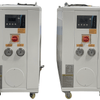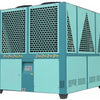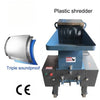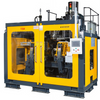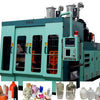Design and Application of 12-Liter Extrusion Blow Molding Machines in Modern Industrial Packaging Abstract
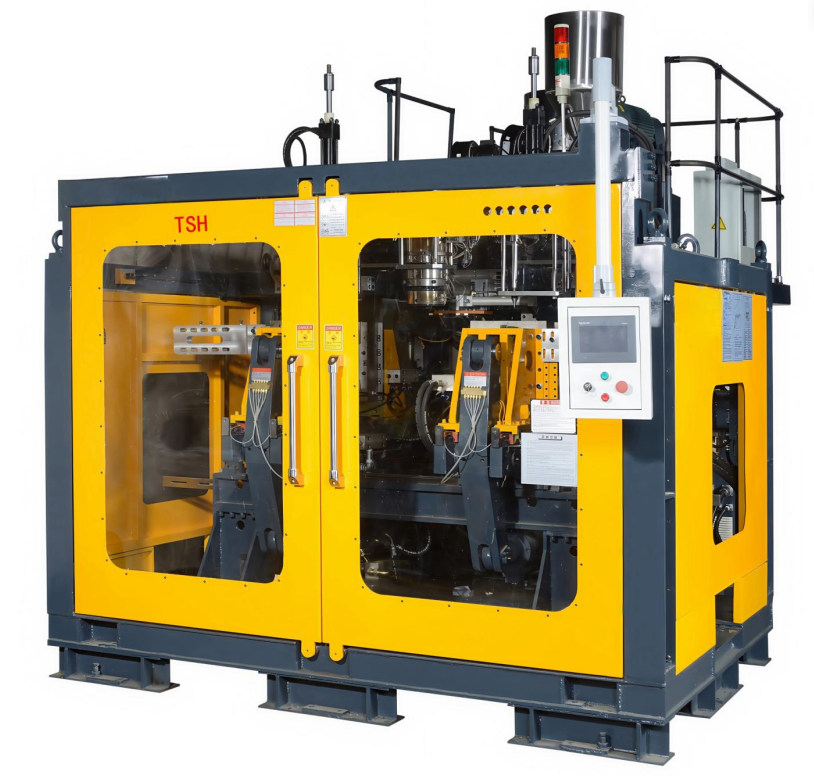
1. Introduction
The demand for robust, lightweight, and chemically resistant plastic containers has driven continuous innovation in extrusion blow molding technology. Containers in the 10–15L range—especially 12L—are essential across automotive, agricultural, and chemical sectors, where durability, sealing integrity, and standardized dimensions are paramount. Unlike injection or stretch blow molding, extrusion blow molding excels in producing large, seamless hollow parts from thermoplastic resins such as HDPE and PP. The 12L capacity strikes an optimal balance between material efficiency, handling ergonomics, and logistical compatibility, making it a benchmark volume in industrial packaging.
2. Machine Architecture and Key Components
A typical 12L extrusion blow molding machine—such as the YJH90-12LⅡ (Yijiu Machinery, 2025)—features the following core subsystems:
-
Extrusion System:
- Screw diameter: 90 mm
- L/D ratio: 25
- Motor power: 37 kW
- Heating zones: 4 (total heating power: 8.8 kW)
- HDPE output: ~140 kg/h
This configuration ensures stable melt homogeneity and high extrusion rates for continuous parison formation.
-
Mold Clamping & Motion System:
- Clamping force: 120 kN
- Mold opening stroke: 280–750 mm
- Template size: 570 × 540 mm
- Mold travel: 750 mm
The double-toggle (crank-arm) clamping mechanism provides high rigidity and precise mold alignment, critical for uniform wall thickness in large containers.
-
Die Head and Parison Control:
- Continuous die head with 4 heating zones (3 kW total)
- Maximum die diameter: 200 mm
- Optional features: parison programming, liquid-level marking, multi-layer co-extrusion
-
Blowing and Cooling System:
- Blowing pressure: 0.6 MPa
- Air consumption: 0.8 m³/min
- Cooling water pressure: 0.3 MPa
- Water flow rate: 60 L/min
Efficient internal and external cooling ensures rapid cycle times and dimensional stability.
-
Automation & Control:
- PLC-based control (e.g., Siemens)
- Integration with downstream automation (conveyors, leak testers, labelers)
- Dual-station design enables simultaneous extrusion and blowing, doubling throughput
3. Production Performance and Efficiency
The YJH90-12LⅡ achieves an empty cycle rate of 600 pcs/h per station, yielding up to 1,200 containers per hour in dual-station mode. This high productivity is complemented by:
- Material versatility: Compatible with PE, PP, and blends (e.g., HDPE/PP)
- Energy optimization: Efficient heating zones and regenerative hydraulics reduce idle power consumption
- Labor reduction: Full automation minimizes operator intervention, lowering labor costs by up to 40%
- Flexibility: Quick-change die heads allow production of 1L–12L containers on the same platform
4. Industrial Applications
12L blow-molded containers are predominantly used for:
- Automotive: Engine oil, transmission fluid, and coolant bottles
- Agriculture: Urea and pesticide containers (as noted in [1] and [5])
- Chemicals: Industrial solvents, detergents, and reagent drums
- Food & Beverage: Large-format edible oil or syrup containers (with food-grade PP/HDPE)
The ability to incorporate liquid-level indicators, handle integration, and tamper-evident features enhances functionality and compliance with packaging regulations.
5. Technological Trends and Future Outlook
Recent advancements in 12L EBM machines include:
- Electric-hybrid drives: Replacing traditional hydraulics to reduce noise, oil leakage, and maintenance (as seen in Plastiblow’s PB series [2][6])
- IoT-enabled monitoring: Real-time tracking of cycle time, energy use, and defect rates
- Multi-layer co-extrusion: For barrier properties (e.g., EVOH layers) in chemical or fuel containers
- Sustainability focus: Use of recycled HDPE (rHDPE) and energy-per-kg metrics below 0.3 kWh/kg ([2])
These innovations align with global trends toward smart manufacturing, circular economy, and carbon footprint reduction.
6. Conclusion
The 12-liter extrusion blow molding machine stands as a workhorse of industrial packaging, combining scale, precision, and adaptability. Modern systems like the YJH90-12LⅡ exemplify how mechanical robustness, intelligent control, and modular design converge to meet the evolving demands of high-volume production. As industries prioritize automation, sustainability, and total cost of ownership, 12L EBM technology will continue to advance—delivering not just containers, but integrated solutions for the future of plastic packaging.
-
Posted in
extrusion blow molding machine

